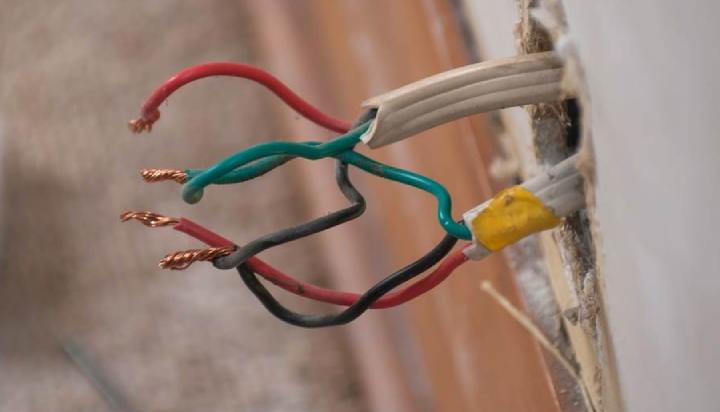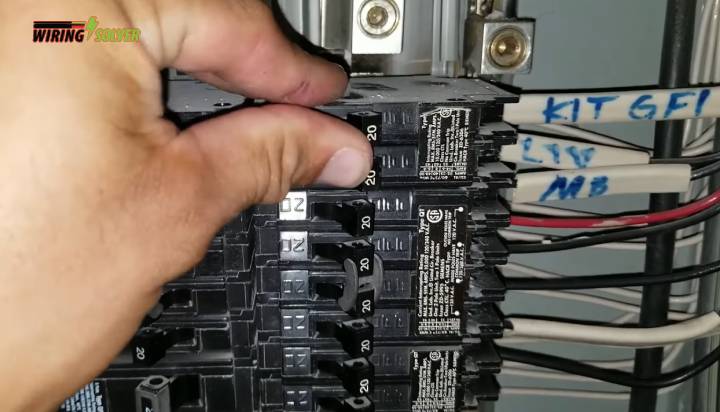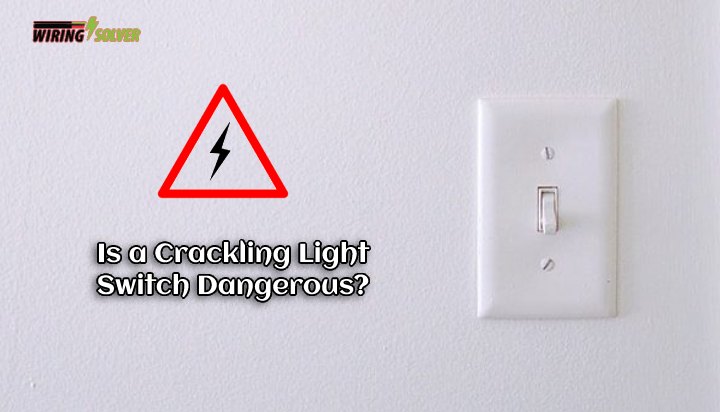DIYers or usual folks who tend to add new fixtures sometimes find the black wire and get stuck to identifying its meaning. Does it contain power or not? Will it hurt if I touch it with bare hands?
All of the queries can be understood if you know what is black wire in electrical outlets. It indicates either hot life or neutral based on country, system, phase, and voltage.
This might seem confusing without seeing the examples. Don’t panic as I’ll explain this topic here. Let’s Get into It!

Discover What Is Black Wire in Electrical Outlets!
In this section, I’ll break down the meaning of black wire in electrical outlets in detail. Keep on reading to understand the topic in a better way:
Based On the System, The Meaning of Black Wire
In the DC line, the black wire means nothing but a negative (–) line. However, the same wire will be both neutral and hot conduct in the AC line based on country types. I’ll break this down in a table so you can know how the same wire gets a separate tag in the electrical outlet field.
Based On the Voltage, The Meaning of Black Wire
The use of a standard voltage in recent times is 120V or 240V in North America and other European countries. However, the standard changes based on countries and phase type. Here’s what I mean:
| Black Wire | Country | Version | Function |
|---|---|---|---|
| In Phase 1 | NEC standard (including Canada & US) | New | Hot live |
| IEC & BS standard (including UK & European side countries) | Old | Hot Live | |
| Australia, New Zealand, Malaysia, China, India, South Africa & Pakistan | New | Neutral | |
| Russia & Singapore | Old | Neutral | |
| Philippines, Japan, & Argentine | New | Hot Live | |
| In Phase 3 | NEC standard (including Canada & US) | New | Line 1 (L1) |
| IEC & BS standard (including UK & European side countries) | New | Line 2 (L2) | |
| Japan | New | Line 1 (L1) | |
| China, Russia, India, Pakistan, & South Africa | New | Neutral | |
| Australia | New | Line 2 (L2) |
Based On the Voltage, The Meaning of Black Wire
The use of a standard voltage in recent times is 120V or 240V in North America and other European countries. However, the standard changes based on countries and phase type. Here’s what I mean:
Black Wire | Voltage | Country | Function |
In Phase 1 | 120V or 240V | North America & European countries | Line 2 (L2) |
In Phase 1 | 230V | New Zealand (old version) | Neutral |
In Phase 3 | 208V or 120V | North America & European countries | Phase 1 or A (L1) |
In Phase 3 | 230V or 400V | UK (old version) | Line 2 (L2) |
How To Identify If the Black Wire Is Hot Live or Neutral?
The easiest way one can figure out whether the black wire is neutral or hot live is by looking at the sign in the electrical panel. Let me explain you how to do it:
- If the black wire is inside the wall of your house, then it’s the hot wire (which you can’t touch without turning the breaker off as it contains electricity).
- For the black wire that isn’t from a solar panel, it can be positive (hot live) or negative (neutral). To get what type is the wire, look at the back of the panel that has either a + or – sign.
- The + sign indicates the black wire contains shock aka hot life.
- The – sign means the black wire has a negative line aka neutral.
Be sure to use the multimeter to know if the current or electricity is passing through the black wire or not.
What Does a Black Wire Connect To?
The black wire in the electrical outlet for home (residential) electricity purposes usually connects to the hot live post or terminator (bus bar has current).
However, for other purposes, the black wire connects to the neutral bus bar in the electrical panel. For your information, the bus bar is a small conductive part of the metal that holds the wire with a screw to supply or distribute the current.
Frequently Asked Questions
1. Is the black wire hot or negative?
If it’s about AC electrical system, the black wire sometimes indicates a hot or positive. However, in the DC electrical system, the same cable means a negative or neutral line.
2. Is black wire live or neutral?
The black wire can be live or neutral as different countries use diverse wire codes. In IEC and NEC standards, countries like the UK, US, Canada, and so on use it for live (in phases 1 and 3). Then again, Australia, China, Russia (old) & India uses the black wire for the neutral line.
3. Is black wire for positive (hot) or ground?
As I’ve said earlier, the black wire simply can be positive (hot) or neutral. But that doesn’t mean the same wire can be used for ground (green wire in electrical outlets).
4. Does the black wire carry current?
Yes! The black wire in AC power carries 120V, 208V, or 240V which is enough to kill humans in one touch. Then again, if it’s neutral, the wire still has the same amount of power but goes directly to the ground. Which means no danger as long as it’s passing to the earth.
Overall Thoughts
That’s what is black wire in electrical outlets! The color of the wire plays a vast role to indicate a meaning which helps electricians or usual folks to be aware if it has current or not.
And the black wire does contain current so do not touch it using your hand unless the power supply is turned off.
Hope this guide helps you to know the unknown stuff. See You in The Next Guide!


![480v 3 Phase To 240v Single Phase Transformer [Complete Guide]](https://wiringsolver.com/wp-content/uploads/2022/04/480v-3-Phase-To-240v-Single-Phase-Transformer.jpeg)
![How to Reset Feit Smart Bulb & Reconnect? [Explained]](https://wiringsolver.com/wp-content/uploads/2023/01/How-to-Reset-Feit-Smart-Bulb.jpg)


![How To Remove Plastic Ceiling Light Cover? [3 Methods]](https://wiringsolver.com/wp-content/uploads/2021/09/How-To-Remove-Plastic-Ceiling-Light-Cover.webp)